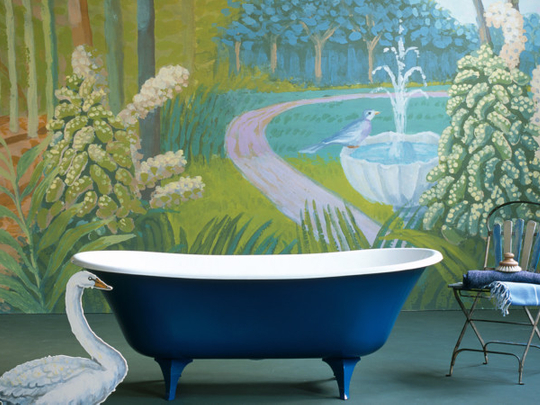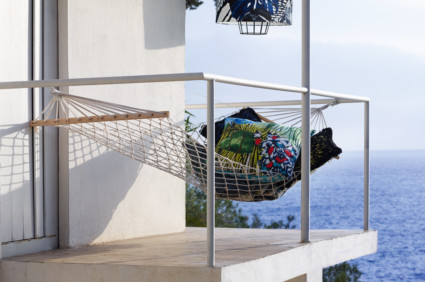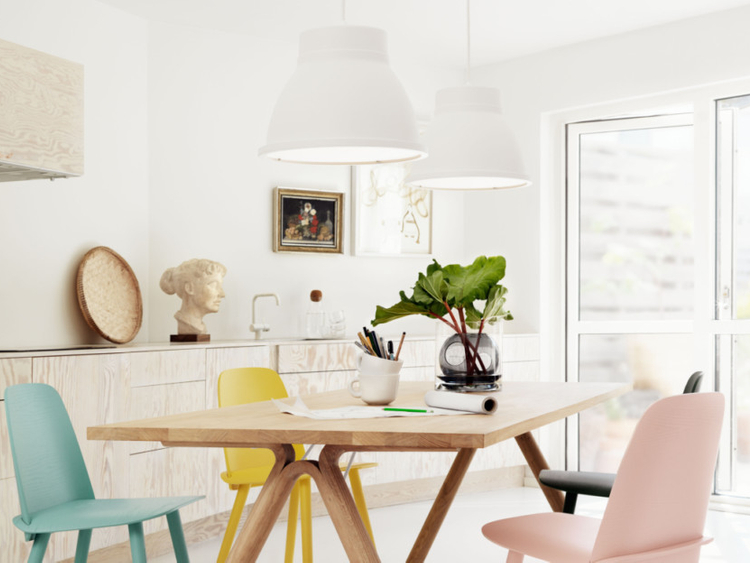
At the peak of summer — and much as I’m grateful to our door to door air-conditioned lifestyle — what I miss most is nature. From the city’s reinvigorated parks to our own gardens, the blazing Sun has a way of keeping us away from lush havens. Why not bring nature into our homes and offices? From floor to ceiling windowscapes blurring the line between exterior and the built to reflection pools running through the internal courtyards, architecture has provided for grand gestures to connect us to nature — at a pretty penny. Here is my take on bringing a bit of nature into our built environments without breaking the bank.
The Green Wall
The coolest green statement you can make in your interiors, All you need for a living wall is a trusted vendor who will create the framework of the wall, advice you on the best plants to choose and even offer a maintenance contract. When choosing plants, try choosing ones that grow fast, unless of course you are the patient kind — a half grown plant wall is not the most attractive. The green walls work best in neutral environments, so you might reconsider the colour of surrounding walls. To truly bring the outdoors in, position your vertical garden on the walls opposite the biggest windows. Planters Group (www.planters.ae) offers a wide variety. For a quicker, cheaper green fix, invest in high quality faux foliage.
From the Earth
Not wanting to go the literal green route? Have a look around for accent furniture celebrating natural materials such as stone, wood, leather and metals. From stone-topped coffee tables to sofa legs tipped with gleaming brass and sideboard finished in sting-ray skin, the biggest names in interiors are turning to nature’s palette for the final flourishes to their latest collections. Roche Bobois (www.roche-bobois.com) contrasts high-gloss against wooden accents in their sideboards while the latest collection of coffee table from FLOU (www.flou.it) showcase the best Italian marbles in simple geometries.
Go Woody
If you are in the mood to invest in a new statement piece — maybe a new kitchen unit or a new dining table — let it be in wood and let the wood be blonde. In addition to retro-revival’s unabashed love for wood — be it the daintily slanted legs of a console or the wishbone chair in is iconic glory — and a general feel for lighter interiors, Blonde wood has made a huge comeback this year. The revisited classic, when applied to modern forms with impeccable detailing is a far cry from your grandma’s sofa set. Muuto’s (www.muuto.com) take on Scandinavian chic erodes IKEA’s mass produced stake at light wood.
Nature for Walls.
From silks threads pressed between rice-paper to shards of bamboo woven together with metal threads and acrylic backing paper, wallpapers allow a safe exploration into nature for our internal walls. With designers investing in intricate designs and prints — sometimes lifting directly from forest and nature scenes, digitally developed to the standards of hand painted art — you can go as minimal or bold when it comes to anointing your walls with a touch of green. Rubelli (www.rubelli.com) offers stunning wallpapers featuring natural materials. If you want to go all out, get your favourite nature shot printed on wall height vinyl wallcoverings. You can also invest I’m new-age designer paints such as the MY HOME collection from JOTUN (www.jotun.com) that promises to replicate textures of stones, eroded plasters, even aged patina.
Merchandise It
Any fashion star will tell you it’s all about how you accessorise. The same applies to interiors. If you’re not one for long term refurbishments, invest in designer pieces that heed to natures call in the most direct, unapologetic manner. From handknotted carpets inspired by ocean hues to the late Oscar De La Renta’s last crockery collection inspired by New York’s botanical gardens, there is enough nature inspiration around to last a season. My personal favourites? The blooming cushions from Cristian Lacroix Maison (www.christian-lacroix.com).
Pratyush Sarup edits the design site designcarrot.net. You can follow the site on twitter @DesignCarrot.












